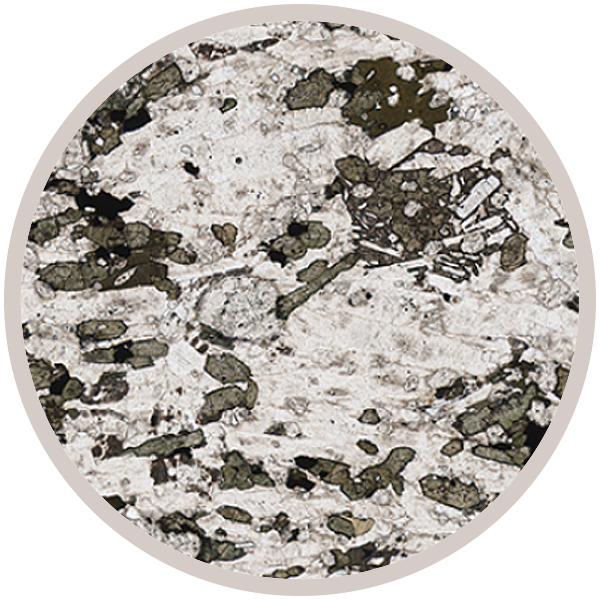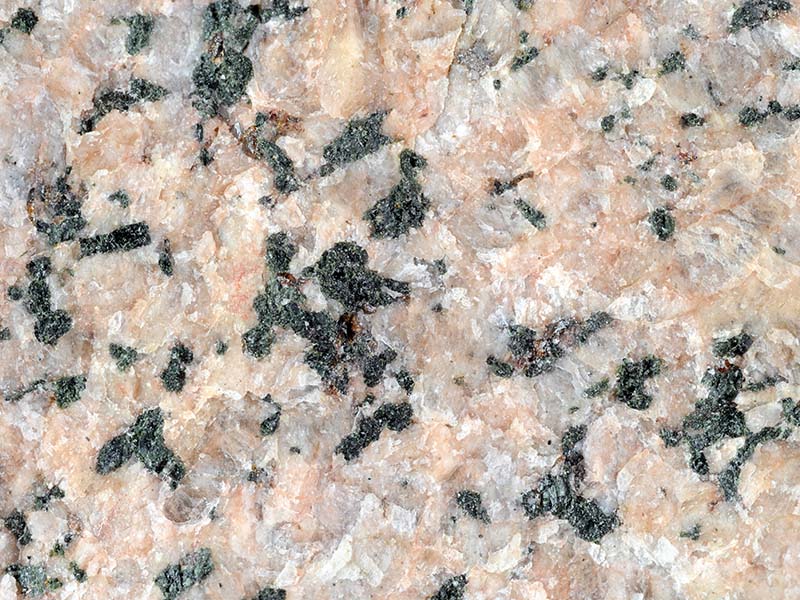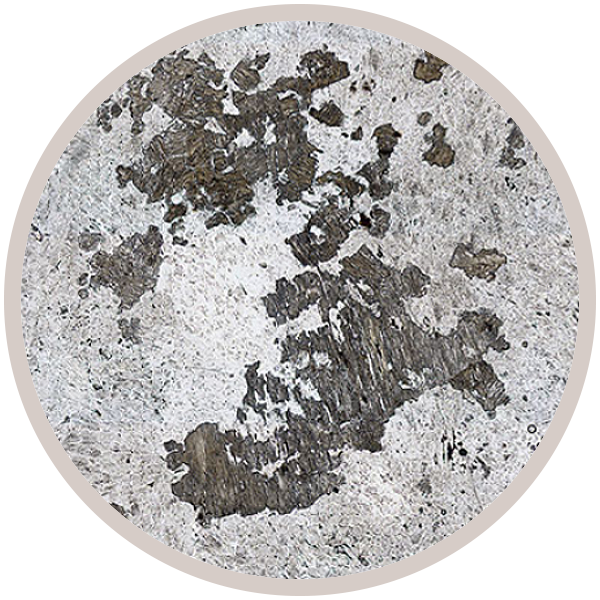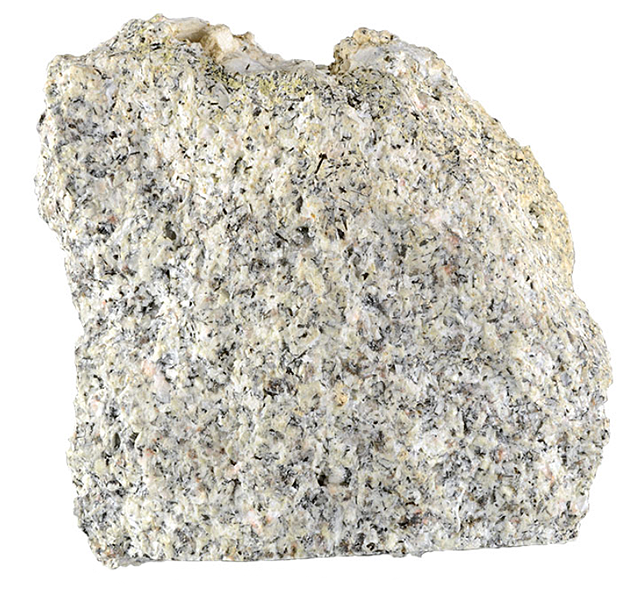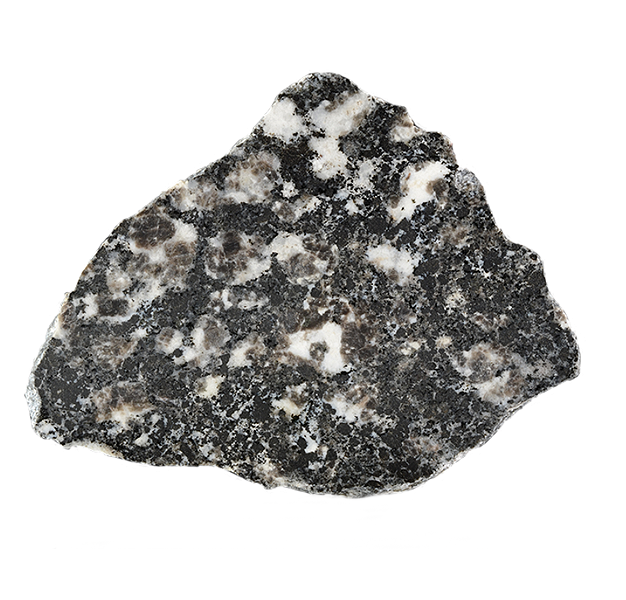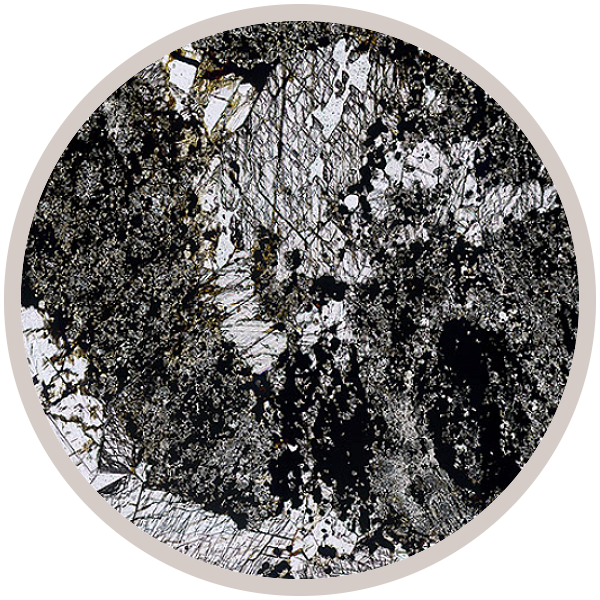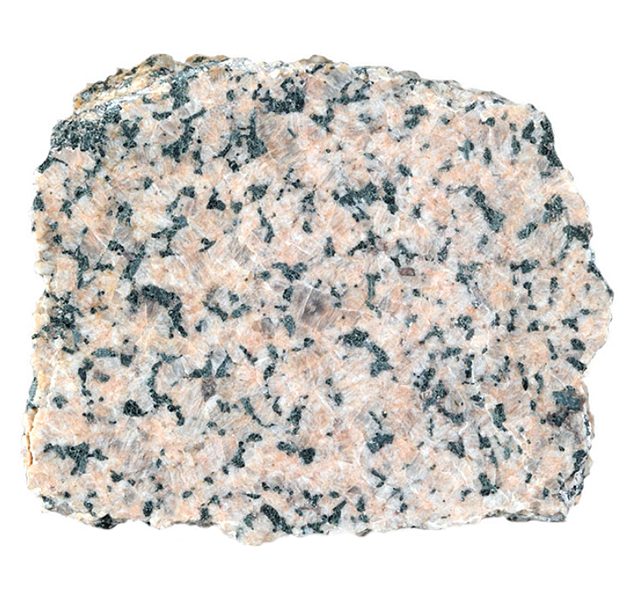
Fact sheet
The Ben Loyal syenite intrusion is one of the largest areas of alkaline igneous rocks in Britain. It was intruded around 426 million years ago after the peak of Caledonian metamorphism in rocks of the Moine and Lewisian groups in the Highland of Scotland. Intrusion of the syenite is thought to have been guided by deformed and folded country rocks to form the current body. This sample comes from the Cnoc nan Cùilean intrusion, a satellite body to the main intrusion, now separated from the main intrusion by the Loch Loyal fault, and is thought to have intruded as a series of sheets.
In thin section the most obvious constituents are green pyroxene (aegirine-augite) and colourless, cloudy orthoclase feldspar. The cloudiness is caused by exsolution of plagioclase feldspar from the orthoclase as the crystals cooled and re-equilibrated. Well-formed (euhedral) crystals of titanite are relatively common, and elsewhere in the sample accessory amounts of actinolite, allanite-(Ce), fluorapatite, ilmenite, magnetite and zircon also occur.
The Ilimaussaq alkaline complex is the type locality for agpaitic nepheline syenites and represents an enormous concentration of rare elements, notably Li, Be, Nb, Zr, REE, Y, Th and U. Around 220 mineral species have been identified. We can't identify all the minerals present in these samples. Email us at virtual-microscope@open.ac.uk if you can help.
Note we have recently expanded the collection to include other syenite complexes worldwide.
See also Alex Strekeisen's great website for more information on syenite complexes.
Sample details
More from this collection

